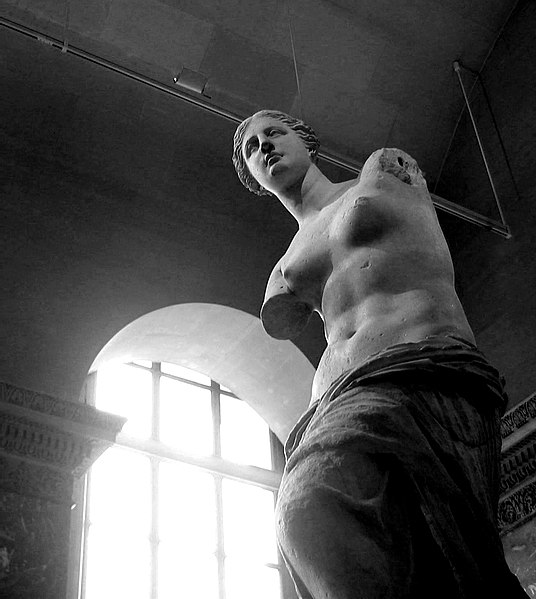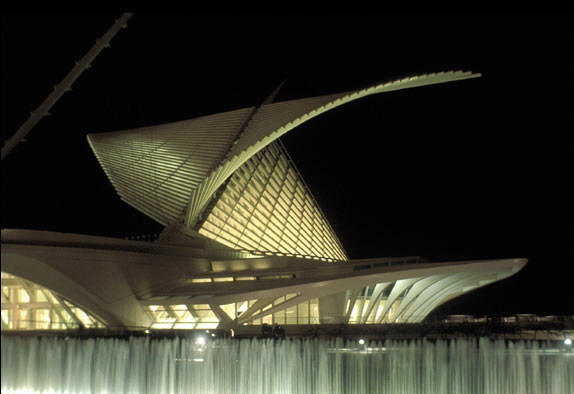 Middle Ages, Renaissance and the Palais BourbonThe only part of the medieval Louvre still visible [6]Main article: Palais du Louvre
Middle Ages, Renaissance and the Palais BourbonThe only part of the medieval Louvre still visible [6]Main article: Palais du LouvreThe Louvre Palace (Palais du Louvre), which houses the museum was like a fortress of Philip II in the 12th Century started with the remains of the building still visible in the crypt. [6] It is not known whether this is the first building on that spot, but it is possible that Philip modified an existing tower. The etymology of the name Louvre is also uncertain: It can reduce the structure's status as the largest end of the 12th Century in Paris (from the French L'Œuvre, masterpiece) and in its location in a forest (from the French Rouvre, oak), or, at the Larousse, a wolf hunting the (via Latin: lupus, lower Empire: Lupara).
The Louvre has undergone many changes throughout the Middle Ages. In the 14th Century, Charles V converted the building into a house and in 1546, Francis I renovated the site in French Renaissance style. [9] Francis acquired what would become the core of the Louvre holdings, including its acquisitions of Leonardo da Vinci's Mona Lisa [10]. After Versailles, Louis XIV chose as his residence in 1682 slowed down construction, however, be permitted to move the Louvre as a residence used for artists.
By the mid-18th Century there were an increasing number of proposals to a public gallery with Lafont Saint-Yenne Publishing, 1747, a call to display the royal collection to create. In 1750, Louis XV agreed and sanctioned the display of some of royal collection in the Louvre. A hall was for public viewing on Wednesdays and Saturdays and include Andrea del Sarto's Charity, and works by Raphael. [14] Louis XVI, the Royal Museum of policy ideas. The Comte d'Angiviller expanded the collection and in 1776 proposed conversion of the Grande Galerie cards included in the "French Museum". Many proposals for the renovation of the Louvre were offered to a museum, but was not agreed. Therefore, the museum remained until the French Revolution incomplete.
 French Revolution
French RevolutionDuring the French Revolution was transformed into a public museum of the Louvre. In May 1791 the Assembly declared that the Louvre would be "a place for the reunification of monuments of all sciences and arts". On 10 August 1792, Louis XVI was arrested and in the Royal Collection of the Louvre was public property. Because of the fear of vandalism or theft, 19 August said the National Assembly of the museum's preparation as a matter of urgency. In October, a committee of "preserving the national memory," which began assembling the collection for display.
Opening

Antonio Canova Psyche Revived by Cupid's was in 1787 commissioned Kiss, and the first version was donated to the Louvre after the reign of Napoleon I in 1824.,
The museum opened on August 10, 1793, the first anniversary of the death of monarchy. The audience was free access to three days a week, there was the "perceived as a great power and was universally popular." Presented the collection of 537 paintings and 184 works of art. Three-quarters were taken from the royal collections, expand to the rest of emigrants and confiscated church property (biens nationaux). And organize the collection, dedicated to the Republic 100 000 livres per year., 1794, France began in the revolutionary armies to bring pieces from all over Europe, like Laocoon and his sons and the Apollo Belvedere to create the Louvre as a museum and as a "sign of popular sovereignty."
The first few days were hectic, Artists in Residence ", lived and hung the unmarked images" frame to floor to ceiling "frame [18]. The building closed in May 1796 because of structural deficits. The re-opening on July 14, 1801 , arranged chronologically, with new lighting and columns.,
Napoleon I
Under Napoleon I, a northern wing parallel to the Grande Galerie was begun, and the collection grew through successful campaigns., After the Egyptian campaign of 1798-1801, Napoleon appointed the first director of the museum, Dominique Vivant Denon. In tribute, the museum "Musée Napoléon" was renamed in 1803 and Spanish, Austrian, Dutch and Italian works were acquired as war booty., After the French defeat at Waterloo, the former owners sought their return. The Louvre's administrators were reluctant to meet many of the works and hidden in their private collections. In response, sent emissaries of foreign governments to London to seek help, and many pieces were returned, even some who had recovered from the Louvre.,[Edit] Restoration and Second EmpireThe Venus de Milo, the Louvre collection was recorded during the reign of Louis XVIII.
During the Restoration (1814-1830), Louis XVIII and Charles X between them has 135 units at a price of 720,000 francs. This was less than the amount given for the rehabilitation of Versailles and the Louvre suffered in comparison to the rest of Paris. After the founding of the Second French Republic in 1848, the new government two million francs for the repair and ordered the completion of the Galerie d'Apollon, the Salon Carré, and the Grande Galerie., By a second December 1851, President Louis-Napoleon Bonaparte staged a coup, the era of the Second Empire French. Between 1852 and 1870, the French economy grew, the museum has reconstructed 20,000 new pieces of his collection, and the Pavillon de Flore and the Grande Galerie were under architect Louis Visconti and Hector Lefuel.,
Third Republic and World Wars
During the Third Republic French Louvre acquired new pieces especially about donations and gifts. The Société des Amis du Louvre demonstrated the Pietà from Villeneuve-lès-Avignon, and in 1863 an expedition discovered the sculpture Winged Victory of Samothrace in the Aegean Sea. This piece, although badly damaged, was displayed prominently since 1884. [25] More than 7,000 works, which arrived after the acquisition of Campana, Durand, salt and Drovetti collections. The 389 items Lacaze Collection, including Rembrandt, as Bathsheba bathing.,
not acquire Museum expansion slowed after the First World War, and the collection of many important new works, the exceptions were Georges de La Tour Saint Thomas and Baron Edmond de Rothschild (1845-1934) 1935 donation of 4,000 engravings, 3,000 drawings and 500 illustrated books. During the Second World War, the museum removed most of the hidden works of art and valuable pieces. On 27 August 1939, after two days of packing, truck convoys started to leave Paris. By 28 December, the Museum of most works vacated left, except those that were too heavy and "unimportant paintings [that] in the cellar" were. In the spring of 1945, after the liberation of France, the art started back in the Louvre.
21 Century
The Musée du Louvre contains more than 380,000 objects and displays 35,000 works of art in eight curatorial departments, with more than 60 600 square meters (652,000 sq ft) is devoted to the permanent collection. [28], the Louvre displays sculptures, art objects, paintings, drawings and archaeological finds. [19] It is the world's most visited museum with an average of 15,000 visitors per day, 65 percent of them tourists. [29] [30] In popular culture, was the Louvre is a point of interest in the book The Da Vinci Code and the 2006 film based on the book. The museum received $ 2.5 million by shooting in its galleries.

No comments:
Post a Comment